1. With the help of Twizzlers, Cadbury mini eggs, and March Madness, I finished the first draft of my YA romantic comedy. Woo.
2. And I'm getting ready for a writer's retreat, which means Preparing my Husband for Full-Time Child Care
3. BWA-HA-HA!!!
3 1/2. Have a great weekend everyone!
Viewing: Blog Posts Tagged with: first drafts, Most Recent at Top [Help]
Results 51 - 71 of 71
Blog: Karen B. Schwartz (Login to Add to MyJacketFlap)
JacketFlap tags: writing, first drafts, candy, three on thursday, Add a tag
Blog: Darcy Pattison's Revision Notes (Login to Add to MyJacketFlap)
JacketFlap tags: book, novel, characterization, first drafts, how to write, random acts, Add a tag
Celebrate Milestones of Writing

This week, I finally have 1574 words done, a solid draft of Chapter 1. I’m celebrating. It’s been a struggle to get this one started. And I have a plan for what comes next, even better.
Do you celebrate small steps along the way of writing and publishing your work? What’s your favorite way to celebrate? What milestones do you celebrate?
–
Random Acts of Publicity Begins Next Tuesday
Next week is the Random Acts of Publicity week. Join us at the Facebook Event page. Invite some friends to join us.
I have posts ready on word-of-mouth, reviews, links and social media.
–
Character Links
Seems like everyone is talking about characterization lately. Here are some links from around the blogosphere:
- Characterization Exercise: No Two Characters Are Created Equal
- Characterization Exercise: Make a Wish
- The Dreaded Mary Sue (the perfect in every way character)
- Janni Talking to her Characters
- Poor Ole Secondary Characters
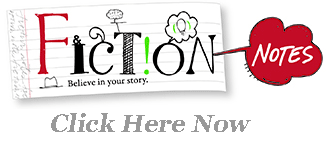 |  It's Here. |
Blog: Darcy Pattison's Revision Notes (Login to Add to MyJacketFlap)
JacketFlap tags: novel, voice, first drafts, first draft, Add a tag
First Drafts are Uncertain, by Nature
I’m at that fragile stage of the first draft when I’m not totally committed to this story. I’m still feeling my way and haven’t yet gained confidence that I will like the story, or that my readers will like it. I’m walking on eggshells.
What can I do to GET committed?

Play with voice.
The main thing I’m doing is to continue to play with voice, making sure that I’m not tied into one way of telling this story yet. I’m doing first person, third person, omniscient. Different narrators are popping up. I’m trying a loose collection of short scenes and trying longer, more connected things. Playing.
Keep writing.
Though it feels like I’m swimming upstream against a heavy curtain, I’m still writing. Just bits and pieces each day, but pages are starting to accumulate so that I can start to see the shape of things. I’m writing.
Embrace uncertainty.
Hardest for me personally is to embrace the uncertainty of this stage of a first draft of a novel. I’m liking the main event and the characters and even most of the plot (so far). But I’ve found that there are two things I need to know. First, what is the story that I want to tell. Second, what is the best way to tell that story.
I’ve found the story, at least I’ve caught it and am wrestling with it. What this draft will tell me is whether I’ve found the best way to tell that story.
 |  It's Here. |
Blog: Darcy Pattison's Revision Notes (Login to Add to MyJacketFlap)
JacketFlap tags: events, novel, research, plot, first drafts, first draft, how to write, Add a tag
Searching for Plot Events
I’m evaluating the outline for my WIP novel and realize that I need more events. It takes place at one big event that spans 98 hours. Within that time period, though, I need some exciting things happening. I’ve sorta mapped out the emotional changes (Wow, what a change for me!), but now it’s the events themselves that matter.
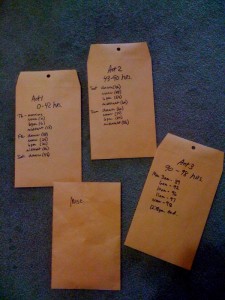
In Roz Morris’ Nail Your Novel book, (a great book to use when writing your first draft!) she suggests that you use a box and just throw in ideas. The ideas can come from brainstorming or from research about a topic. Don’t worry about where the bit of action goes in the story, just write it on a card and throw it into the mix.
When the box is full, or when you’ve done enough research, then you can sort through ideas and evaluate if they will fit into your novel. You’ll want to toss some of them as unsuitable for your story. The rest, though, you can start to sort and put into a reasonable order.
Because my novel has a tight time line, I’ve done a modification. As shown in the picture here, I’ve created three envelopes. As I’m doing research and brainstorming, I’m slotting events loosely into Act 1, Act 2 or Act 3 of my novel. So, use one big envelope or box or several envelopes based on whatever division works for your novel. For example, you might want to use one envelope for each subplot, or perhaps for each major setting of your novel.
In any event, I’m still trying out voices and still plotting. What stage is your WIP at?
 |  COMING AUGUST 15:. The Book Trailer Manual. Click to read about it. COMING AUGUST 15:. The Book Trailer Manual. Click to read about it. |
Blog: Darcy Pattison's Revision Notes (Login to Add to MyJacketFlap)
JacketFlap tags: write a novel, character, plot, create, arc, first drafts, emotion, how to, Add a tag
As I’m working on the plan for this new novel, creating characters and trying out voices, I’m trying to strengthen my weakest areas.
My Weakness is Character
My weakness is character. I can plot fine, but creating characters with plausible character growth is hard for me. I think I’ve got it and my friends tell me that I’m still way off.
This time, I’m majoring on the character’s emotional life. I won’t actually start writing until I have charted the ups and downs of the character as she moves through the events planned.
In James Frey’s book, How to Write a Damn Good Novel II, he gives an example of the Biblical story of Samson and Delilah. Frey uses the idea of a premise, or a short statement about the overall story. For Samson, he uses the premise: Repentance leads to a glorious death.

Frey says that a premise isn’t the same as a moral, and doesn’t have to match up with what we would normally call moral or right or ethical. Instead, it’s a summary of what THIS STORY is saying; it’s intrinsic to this one and only story.
What I liked was when Frey expanded upon the premise:
God’s love leads to a great strength, which leads to heroism in battle, which leads to haughtiness and arrogance, which leads to temptations of the flesh, which leads to betrayal, which leads to defeat and disgrace and blindness, which leads to repentance, which leads to a restoration of superpowers, which leads to a glorious death.
He says the premise, “Repentance leads to a glorious death” is merely a shorthand for the longer version.
Well, I’ve got the premise down! What I’m trying to do right now is to expand it (hindsight is always easier!) so that I can see the character arc better, especially the emotional arc. I love that Frey’s expansion had character qualities: haughty, arrogant, disgrace.
I would like to make it even more tied to those, so it will help me write a better character story:
God’s love overwhelms, which leads to devotion to God, which leads to surprising gift of great strength, which leads to courage, which leads to a heady success in battle, which leads to haughtiness and arrogance, which leads to less devotion to God, which leads to passion and love for Delilah, which leads to betrayal and heartache, which leads to defeat, despair, disgrace and blindness, which leads to repentance, which leads to a renewed awe and devotion to God, which leads to surprising gift of super strength restored, which leads to ultimate sacrifice for sake of God, which leads to a glorious death.
Well, maybe not that much different, but I like–and need–that emphasis on character.
While I’m developing character conflicts, I’m also working on this emotional arc. When I know the arc, then it will be easier to test plot events to make sure they are related to this emotional arc.
Blog: Darcy Pattison's Revision Notes (Login to Add to MyJacketFlap) JacketFlap tags: character, plot, first drafts, how to write, act 2, sagging middle, book, novel, Add a tag
Starting a new novel, I always try to look at the structure of the plot, but this time, I’m especially looking at character issues, since that’s my weakness. A Story of XXX becomes a Story of ZZZIt’s always that tricky second act that’s hard. The actions for the beginning and ending are easy, especially for the story I have in mind. But the second act is the place where characters confront each other and lives change. How to plan for that in the plot? How do you keep from having a sagging middle? Often, there is a midpoint where a story totally shifts in a different direction. For example, in the movie “The Lion King”, there’s a dramatic shift. Act 1 is where the father is killed and Simba is left an orphan and runs away. Act 2/1st half he’s living the good life, “Acuna matata.” Then, his father talks to him from the stars and Simba realizes he must return home and face his evil uncle. A story of carefree living becomes a story of taking up his father’s mantle and leading his pack. The change isn’t always a 180 degree shift; sometimes, it’s a 90 degree shift. It just means that the character’s goals change somewhat because the character has changed. Facing the PastThe midpoint often means facing something from your past. A secret is revealed. A character faces some guilt. A truth must be dealt with. It must cost the character something to turn in a different direction. Sometimes the midpoint change is a switch from emphasis on the physical plot to an emphasis on the emotional plot. The physical plot in my new story is one of endurance. That’s just built into the events. So, I’m asking myself how this can change. A struggle to endure becomes a struggle to understand. Not sure yet, where it will go, but thinking this way is helping me find the story I want to tell. It’s already meant changing the parents of my main character in more interesting ways. I’ve found some secrets in the family’s past.
Blog: Darcy Pattison's Revision Notes (Login to Add to MyJacketFlap) JacketFlap tags: POV, mentor texts, first drafts, write, omniscient, first, how to, third, novel, Add a tag
I’m finally — after two major life events, a grandchild and my daughter’s wedding — ready to start a new novel. I’ve found two mentor texts that I’m hoping will show me something about how to proceed. Novels to Imitate and Learn FromEducators often use mentor texts when teaching writing to kids. The idea is to choose texts that in some way model the type of writing you want as a result. This means you need a good vision for the end result, or the mentor texts you choose won’t help. For my new novel, I know that I”ll have quite a few characters and that the POV will probably change often; each section might be quite short; that I might be playing with 3rd person and omniscient POVs. I’ve been looking around and found two that are interesting in this respect. Permission and Hope. From these texts, first, I have permission to break the rule of only one main character, one main POV. That’s important. It can be done and done well. Which also gives me hope! Direction to Start. I’m looking to these two texts as a direction for my first efforts. That does NOT mean I intend to write with a Raskin/Appelt voice. I expect to produce something quite different. Still, this is a place to start. Reference and Teaching. I hope to learn how to move from POV to POV and keep the pacing fast, interest high, and reader involvement at the maximum. I think it will be helpful to refer to these mentor texts as I write the first draft; but I think it will be even more helpful as I work on revision later. So, this week, I’m hoping to make a start, write a couple exploratory pieces, outline, work on character sketches. It’s a start.
Blog: Shari Lyle-Soffe (Login to Add to MyJacketFlap) JacketFlap tags: rejections, Writing tips, submissions, mother, first drafts, perserverance, Add a tag This writing tip comes from my mother. My mother wasn't a writer but she was very wise. My mother said, "If at first you don't succeed try, try again." That is perfect advice for a writer. Your first draft will not be your last. Try, try again. Your first submission should not be your last. Try, try again. You can be certain your first "rejection" will not be your last. Try, try again, and again, and again.
3 Comments on WRITING TIP OF THE DAY, last added: 5/26/2010
Display Comments
Add a Comment
Blog: Darcy Pattison's Revision Notes (Login to Add to MyJacketFlap) JacketFlap tags: novel, character, plot, first drafts, write, setting, how to, prewriting, Add a tag
Rich Prewriting Enhances Novel I’m currently researching material for my novel. Setting. I’ve sort of settled on a setting; often for me, the setting comes first. I’m looking at sequences of events, variations on those sequences, variations in how the setting might look at different times, some of the odd-ball jobs in this setting, etc. I’m looking for something that might ground the scene in the particulars of daily life. For example, is there a coffee shop nearby, or maybe a playground. (Or, is it plausible for me to invent one of those.) Plot. I’m wondering what could take place in this setting. In some cases, that means I need to investigate the logistics of something to make sure it can work. Doing all that research is Prewriting. When I teach writing to kids, I insist on multiple prewriting activities. They sometimes do up to eight quick activities before they write. A rich prewriting environment means stronger first drafts. I’m figuring that if kids need eight prewriting activities, I need to do even more.
Blog: Kristi Helvig YA Author (Login to Add to MyJacketFlap) JacketFlap tags: kristi, writing, first drafts, Add a tag
The excitement of the first draft of a brand new manuscript reminds me of the initial stage of a relationship. New story = new boyfriend. Think about it -- the book consumes your every waking moment, all you daydream about is the scene or conversation that happens next, and you neglect basic things like dishes and laundry just to be with your characters for a few more minutes (please don't tell me I'm the only one with heaps o' laundry in my closet). Don't get me wrong -- revisions and edits have their own unique brand of charm -- but it's not the same thing. So I've been cooling my heels waiting to submit revision number bazillion of my book to my critique group and -- something happened. It was a soft whisper in my ear, beckoning me closer. And guess what? Yeah, I've got a new boyfriend. Technically, an ex-boyfriend since I started this ms before my current book, but this ex really wants me back. He's been very persistent and I'm back in that excited 'first draft' stage. I know I'll settle into the routine of revisions when I finish the draft but for now -- I'm just going to enjoy my new love. What about you guys? Any new boyfriends out there?
0 Comments on My New Boyfriend as of 1/1/1900
Add a Comment
Blog: Darcy Pattison's Revision Notes (Login to Add to MyJacketFlap) JacketFlap tags: first drafts, brainstorm, how to write, techniques, creativity, novel, Add a tag
Searching for the Right IdeasBrainstorming, created by advertising genius Alex Osborn, is meant to be a group activity, a way to encourage everyone to participate. It’s usually set up with rules that encourage ideas, even if they are wild, while discouraging any negative comments which might stem the flow of ideas. What it encourages is the flow of ideas, without concern for quality. But what if you’re alone, or no one really knows what you’re working on and you want to keep it that way?
Prompts. Randomness is good. By adding in random tidbits here and there, you have a better chance of creating something new and fresh. That’s where prompts come in. For example, Natalie Goldberg has many odd (in a good way) prompts in her book about writing memoirs, Old Friend from Far Away. It almost doesn’t matter as long as you try to relate each piece of writing toward the idea you have. Tools: Beyond brainstorming, there are literally dozens of structured ways to search for new ideas. The idea-generation techniques may be intuitive or structured, systematic or random. I like this book as a reminder of various techniques: Thinkertoys: a handbook of creative-thinking techniques by Michael Michalko. Or for fun, try his ThinkPak card pack. You know what I like best about this time when I’m starting a new novel? I’m never wrong. Right now, before anything is committed to paper, the new story is all possibilities and that’s so nice. No critiquer can tell me I’ve done something poorly. At least not yet. Here’s to fresh, exciting, high concept and fun ideas.
Blog: Reading, writing, and chocolate (Login to Add to MyJacketFlap) JacketFlap tags: first drafts, Add a tag
I'm in the middle of a first draft, and it's going well, considering. I have a bare-bones synopsis that's guiding me, so I know pretty much what needs to happen in each next chapter. Blog: Darcy Pattison's Revision Notes (Login to Add to MyJacketFlap) JacketFlap tags: author, progress, NaNoWriMo, first drafts, first draft, how to write a novel, word count, writing career, finish, write a book, Add a tag
NaNoWriMo and the Evolution of a WriterGuest post by Beth Cato.Follow her NaNoWriMo progress at her blog, Catch a Star if It Falls. For years I dreamed of being a published writer, but I didn’t actually write anything. I had plenty of excuses – college, a full-time job, marriage – but I couldn’t stop that yearning to create stories. NaNoWriMo changed everything.
NaNoWriMo offered a firm deadline and a supportive community, but most of all, it taught me discipline. If I could write 2,000-words-a-day during a November, I could do it all year long. If I dared to post excerpts of my novels-in-progress, I could work up the nerve to submit my work to agents and editors. But it’s been a gradual process, and it reflects my personal maturity as well as the maturity of my writing. 8 Years of Writing2002Too afraid to start a work from scratch, instead I wrote a fictionalized autobiographical piece about a disastrous family trip that took place when I was ten. About a week into the November, I posted on the NaNoWriMo forums and declared myself a failure. I was working ten-hour shifts four nights a week, and I was far too tired to write when I got home. My fellow writers encouraged me to keep going. I did. I forced myself to type 5,000-7,000 words on each of my nights off and I made my goal. 2003I dove into my first original novel effort about a ghostly unicorn, an abused girl, and selkies. No outline, no real plot. I felt tremendously proud of achieving my 50,000-words, but when I re-read my work a few months later, and I was stunned to find it made little sense and my heroine had zero personality. Ouch. 2004My husband was on full naval deployment and I was entering my second trimester of pregnancy. Writing was a bit tricky since I felt nauseous if I sat at the computer for more than thirty minutes at a time. I somehow fulfilled my 50,000-word goal for MOUSE, and the novel wasn’t even close to completion. 2005With my husband gone again, an infant crawling underfoot, and under the burden of constant fatigue, I resolved to finish MOUSE. But when my husband returned home partway through the month, I stopped writing at 38,000 words. I didn’t have the energy to walk to the mailbox, much less type. 2006I was not going to fail again. I did most of my writing via a laptop while my son watched his two favorite TV shows – Sesame Street and The Price Is Right. The story wasn’t done when we went on a Thanksgiving trip to California, so I brought the laptop along and finished the novel at my parents’ house. I did it. For the first time, I felt I had something that might be publishable. 2007Queries for MOUSE led to agent rejections, but I wasn’t giving up on the dream. THE LOCKED DOOR followed the cross-dimensional adventures of a disillusioned Navy wife. I finished my 50,000 words on November 19th, and then completed the novel in January. I learned my lesson: now I was going to write and edit all year long, not just in November. 2008After the concept for NORMAL came to me in a dream, I knew this plot would mean trouble. I began researching in May and read and bookmarked my way through five books on anatomy and emergency medicine. Full chapter outlines and character biographies guided my writing, and my word count exploded. In twenty-four days I churned out 74,000-words on my superhero urban fantasy, NORMAL. I finished writing the novel in January and February, and after receiving critical professional feedback, rewrote the entire thing in autumn 2009. 2009I intend to start on a sequel to NORMAL. I may be a slow learner, but I’m getting better every year. Lessons from NanoWriMoWhat have I learned from slogging through this masochistic ritual
The tears, carpal tunnel, and sleep deprivation are worth the effort. Nothing compares to seeing that completed progress bar on the NaNoWriMo site. “I wrote a novel. I did it. I made the time. I’m an author.” Once you experience that high, you’ll understand why suckers like me keep coming back every year. Related posts: Blog: Darcy Pattison's Revision Notes (Login to Add to MyJacketFlap) JacketFlap tags: how to write a novel, outline, confidence, NaNoWriMo, plan, resource, first drafts, first draft, revise, Add a tag
Review of Nail Your Novel by Roz MorrisBritish author and writing teacher Roz Morris has a new book out just in time to help you with that first draft of your new novel. You know, the one you’re going to write in November for National Novel Writing Month, better known as NaNoWriMo. Hiccups in your Confidence and MotivationMorris writes with great wit and wisdom about the writing process, starting with those awkward moments when you actually admit, “Yes, I’m, uh, writing, well, you know, something a bit longer. Maybe, a, uh, a novel.” Writing always begins here, by acknowledging the writer as a person with the usual insecurities. Morris address this directly by providing you with some structure. No, structure isn’t for everyone, but for beginners, structure can be a comfort and save them a lot of time. Her process involves a series of tasks, breaking down the process into smaller steps:
Help for NaNoWriMo writersAuthors embarking on the month-long adventure of writing 50,000 words in November will appreciate the first few tasks. Morris gives you direction on how to thicken the plot, find inspiration, decide what does NOT belong in the book, accept random input, and generally get the overall story thought out. Research (Task 3) can flesh out details further:
Overall, Morris’ experience enhances the book. This is a process she is intimately acquainted with and daily practices. Even if you’re experienced, I recommend the book as a review for concepts you already know. Because I think you’ll also find some unexpected nuggets. And for more nuggets, read Roz Morris’ blog, Dirty White Candy (Yes, a strange name for a blog, you say. Morris explains it on her home page). Example of her posts: How to Make Readers Root for Your Character
Related posts: Blog: Teaching Authors (Login to Add to MyJacketFlap) JacketFlap tags: What's Your Story, inspiration, first drafts, plotting, Anne Lamott, self-talk, Marion Dane Bauer, Bird by Bird, Add a tag
For the past week or so, you, Our Faithful Followers, have sent us your favorite books on writing for children and young adults. Now it's out turn (the Teaching Authors) to join the conversation with OUR favorite books. My drawers are full of elegantly worded first chapters that have no second chapters, because I exhausted my original creative impulse by trying to make them "perfect" the first time. At some point, I became so frustrated with my imperfection, I gave up on them, or talked myself into thinking the whole idea was stupid. Clearly, Anne Lamott and Bird by Bird had a lot to say to me. But on to what I am supposed to be writing about...writing books to use with kids. My all-time recommendation is Marion Dane Bauer's What's Your Story?OK, I will admit up front that Marion Dane Bauer was one of my teachers in the Vermont College MFA program. However, I read this book long before I ever met her, and found it to be a straightforward in explaining the writing process to a young writer. Without condescending, it starts with the basics of character, setting and plot, and shows the writer how to fashion a multi-dimensional character, make the setting another "character" in the story, and how to dovetail the plot events in so that each event builds on the previous. Bauer manages to convey all this for writers age ten and up, in less than 120 pages. Plot is my weak point, and What's Your Story reminds me not to include a single word that will not further the story. Bauer's mantra, "How does this move the story along?" is something I have to ask myself at the end of every page. Marion Dane Bauer and Anne Lamott are my writing mentors, even though I personally know only one of them. It's sometimes crowded in my office, as the three of us plow on through my next "crummy" first draft, stifling the radio station in my head, and chanting HDTMTSA? (How does this move the story along?) But it works.
3 Comments on "Crummy" First Drafts and Moving That Story Along by Mary Ann Rodman, last added: 9/24/2009
Display Comments
Add a Comment
Blog: Darcy Pattison's Revision Notes (Login to Add to MyJacketFlap) JacketFlap tags: YA, novel, graphic novel, ABC book, middle grade, MG, audience, first drafts, chapter, format, write a book, Add a tag
Does Format change a story?Format. Yes, it makes a difference. How you present information or how you present a story make a difference to the text. For example, I’ve been wanting to write a nonfiction book about a topic and tried writing a proposal for a middle grade book. It didn’t seem right. Notice that this format change also meant a change in the age of the intended audience. I’ve taken stories and tried them as a graphic novel, as a middle grade novel and as a YA novel. I’ve taken an early chapter book and divided it into six equal-length chapters, and then divided it again into multiple short, uneven-length chapters (such as Moxy Maxwell Does Not Love Stuart Little). The story doesn’t change, but it feels very different. There are books which I find I can’t read, (Heaven’s Eyes by David Almond) but when I listen to the audio version, I love it. I wonder if stories will feel different when read as an ebook? Audience and format can change the content, the voice, the tone, or the overall feel of a story. What format do you envision for your story? How does that affect what/how you write? Related posts: Blog: Teaching Authors (Login to Add to MyJacketFlap) JacketFlap tags: Mary Ann Rodman, revision, brainstorming, first drafts, Jimmy's Stars, first day of school, Writing Workout, Lesson Plan, stream-of-conscious narrative, First Grade Stinks, Add a tag Happy New Year! As any student will tell you, the new year doesn't begin January 1; it's the first day of school. Today it's heading toward another 95 degree day here in Atlanta, but it's "the new year"; the first day of school.If you've read First Grade Stinks, which is based on my daughter's struggles to adjust to a new teacher, you might guess that "Happy New Year" is not the way we greet the
2 Comments on Happy New Year!, last added: 8/13/2009
Display Comments
Add a Comment
Blog: Seize the Day (Login to Add to MyJacketFlap) JacketFlap tags: children's books, tips, inspiration, Revision, first drafts, Holly Cupala, Erin Murphy, Jolie Stekly, molly blaisdell, break writing rules, Conrad Wesselhoeft, Add a tag
Hey, folks, welcome! I'm going to do triple duty this week. I'm going to CELEBRATE!, give some revision tips for the SUMMER REVISION SMACKDOWN with Holly Cupala and Jolie Stekly, and add something about First Drafts (Vijaya Bodach, I hope you are humming along.) First up, a big shout out for my author friend Conrad Wessehoeft. Congrats to him and yay! for his fab agent Erin Murphy. Conrad and I have been in the same critique group for 11 years (yes), and this is a book you will will want to watch for. Persistence is everything, folks. Really. Here's the announcement: World rights to Conrad Wesselhoeft's YA debut ADIOS, NIRVANA, about a teenaged poet-musician who survives the first anniversary of his twin brother's death with the help of a dying blind man, the best group of thicks a guy could have, a demanding school principal who wants him to play the "pussiest song in the world" at graduation, and one very special guitar, for publication in fall 2010, to Kate O'Sullivan at Houghton Mifflin Harcourt Children's, at auction. Here is my wonderful group: From left to right. Back row: Louise Spiegler, me, Conrad Wesselhoeft. Front row: Susan Greenway, Cathy Benson, Megan Bilder. (Note: this is not my only wonderful group. I'm blessed beyond measure when it comes to the writing journey.) Now for all the Smackdown folks. You never finish books. You only abandon them. I always feel like a worn-out, wrung-out dishrag when I'm finished with a revision draft. As promised, here are some tips to handle flaw types. Typos- It's a good idea to keep a list of your most likely typos so that you can keep an eye out for them. Stuff that doesn't make sense: You are working too fast. Slow down and give yourself extra time to think as you move forward. Deleted stuff: Never really delete anything. I keep an extra file called the dump. Any time I delete, that bit goes into the dump and occasionally I do go dumpster diving. Stuff I've got to move is orange. I use symbols to make moves, like "o, p. 22" and on page 22 you will find the 'o'. That is the destination. Stuff that is awkward or needs better wording is yellow. It's called a thesaurus, folks. Use it and often. Stuff that I need to add to is green. If it is short, I just write the addition on the manuscript. If it is longer, I often keep some lined paper nearby and freehand a needed paragraph and staple it to the page. I hope one of these tips helps you. Now for the first drafters, what happens when you are stuck? Yes, sometimes a draft grinds to a halt. This is the most disheartening thing ever. I've found a few things that can help this. You can try rereading the manuscript from the beginning. Print it all out and don't take a pen. Just read. This can jump start you. Another thing to try is to skip ahead. Jump to a section where you are sure what to do and get to writing. Here's another thing to try. Pull out the Hero's Journey checklist and start marking off your story points. Is something missing? The last one is stick the manuscript in a drawer for a month. Let you unconscious mind work the problem out. It will sometimes. Hope this get you out of any miry patches. This week's playlist hit: Whitney Houston and Mariah Carey singing "When You Believe". I hope it inspires you to keep going forward whatever stage you are at. No doodles this week, hopefully my computer will come back someday and my tech stuff will be set right. So here is your quote for the week. Have faith, folks. Faith is like radar that sees through the fog. Corrie Ten Boom
4 Comments on Novel Writing: Celebration, Revision, and First Drafts, last added: 6/20/2009
Display Comments
Add a Comment
Blog: Darcy Pattison's Revision Notes (Login to Add to MyJacketFlap) JacketFlap tags: first drafts, Add a tag
Need help on the first draft of your novel? Here are some great resources.
Blog: Darcy Pattison's Revision Notes (Login to Add to MyJacketFlap) JacketFlap tags: first drafts, Add a tag
Need help on the first draft of your novel? Here are some great resources.
Blog: Biblio File (Login to Add to MyJacketFlap) JacketFlap tags: mo willems, Travel, Fiction, Graphic Novel, Adult, Nonfiction, Fables, Bill Willingham, barry lyga, Marjane Satrapi, miki falls, mike crilley, YA, Add a tag
So, I was really, really, really looking forward to coming home from class tonight and reading Sons of Empire. But it wasn't waiting for me on my doorstep. Publication is getting pushed back to August. UGH. Don't the good people at Vertigo know that I was counting on that to hold me over until Love Is a Many Trousered Thing comes out in early July? Which was in turn holding me over until THE BIG ONE? Jack is a new Fables spin-off series. Jack was too big for Fable Town and was living the high life in LA, but now he's been kidnapped and forced into retirement by Mr. Revise-- the head librarian. Mr. Revise doesn't like Fables that are too big for their britches and holds them in his compound until the Mundies forget them, thereby stripping them of their power. This is where Mother Goose now lives. But, we know Jack, and nothing can hold him. If you like Fables, you'll like Jack. It's along the same lines with the same new spin and smart humor. I also want to add that I spent the entire book trying to place Sam the maintenance main. It wasn't until the end, when he did his thing with the tigers, that it clicked. Miki Falls: Spring Mike Crilley I don't read a lot of manga. It tends to not be my thing, but there was a question about this at work, so I picked it up. Now I can't wait until Miki Falls: Summer So, it's Miki's first day of her senior year in high school when she meets the new boy in town, Hiro. Hiro pushes everyone away and doesn't want to make friends, or fit in. Miki knows there's something behind his tough exterior and wants in. Slowly, she starts chipping down his walls, only to find a really deep, big secret. I was kinda blase on this until I found out what the secret was. Which I can't say, because that would totally ruin the book. But it's a really interesting concept that has me enthralled. Definitely on the girly side of things, I'm hooked. Chicken with Plums Marjane Satrapi I fell in love with Marjane Satrapi's work this spring. Chicken with Plums is a short book looking at an Iranian musician's final days. After his wife breaks his tar during an arguement, Nasser Ali Khan can not find a new one he likes the sound of. Eventually, being unable to find a new instrument to play, he loses the will to live, and decides to die. In the eight days until his death, Satrapi (his great-niece) chronicles his dreams and hallucinations, illuminating his past and the future of his family. The same elements that make Satrapi's previous works great are at play here, with the element of mystical realism, and heartbreak. Her art tends to be stark, which adds to the bleakness that Nasser Ali, and the reader, feels as he waits for Death to come to him. You Can Never Find a Rickshaw When It Monsoons - The World on One Cartoon a Day Mo Willems Those of us who are hep to kidlit best know Mr. Willems from such fantastic titles as Knuffle Bunny: A Cautionary Tale, Don't Let the Pigeon Drive the Bus!, and Leonardo, the Terrible Monster. That last one is one of my favorites for storytime-- especially that temper tantrum bit in the middle. I really get into that one. Anyway, back in the day, before he started writing hilarious children's books that adults enjoy almost as much as children, but on a whole different level, back when Willems was just a recent college grad not entirely sure what to do with this life... he took a trip around the world. Instead of keeping a traditional travel journal, at the end of each day, Willems drew one cartoon. His cartoons tend not to cover the big tourist things, or the splendor of a country, but rather those little moments that make travel so awesome and perfect. Most cartoons had a caption and Willems has added modern day captions and commentary as well. Some of my favorites were from December 9th, "While ordering lunch, make a mental note to learn the Thai word for 'chicken'" or July 3, "Old enough to smoke, young enough to play hide and seek." Dave Barry's introduction is also hilarious and sets the book up perfectly. The Astonishing Adventures of Fanboy and Goth Girl Barry Lyga Donnie's the geeky scrawny kid who's always getting picked on in dodgeball with the gym teacher never noticing, or caring. His best friend is a super-cool jock, so they can't hang out together at school (even though I got the feeling this is mor Donnie's imagining of an unspoken rule that his friend really didn't care about). His mother is pregnant and won't let anyone come over to the house, and he hates his stepdad. The only real comfort he gets is from reading comic books and drawing his own. Then, one day, the goth girl, Kyra enters his life and everything changes. Boy meets amazing/weird girl who changes everything has been a trend I've noticed a lot in YA books recently. Maybe this is the boy equivelent of the girl story of girl cruches after hott popular guy and never realizes until the end that her best guy friend is her prince charming after all... I liked this book. Donnie's voice is sharp and authentic. And Lyga's love of comic books shows through, which is why I'm including it in this post, even though it's not a graphic novel. Also, I have 17 books checked out from the library and another 6 borrowed from other people. So, the first part of my "read what you own, doofus" challenge is to, well, read those 23 titles. I'm halfway through the biggest, slowest going one, Catherine de Medici: Renaissance Queen of France.
2 Comments on GRAPHIX, last added: 6/16/2007
Display Comments
Add a Comment
|










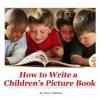 How to Write a Picture Book
How to Write a Picture Book
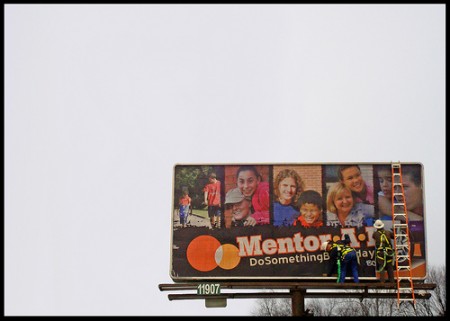





 I’m still working on brainstorming my ideas for a novel and here are some things I look for:
I’m still working on brainstorming my ideas for a novel and here are some things I look for: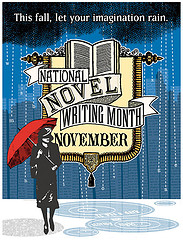
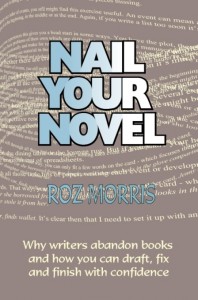

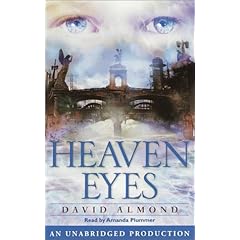



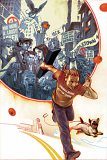
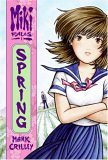

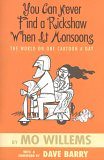

Very good words for all writers to remember.
Cheryl
Great tip reminder!
Your mother's a wise woman!